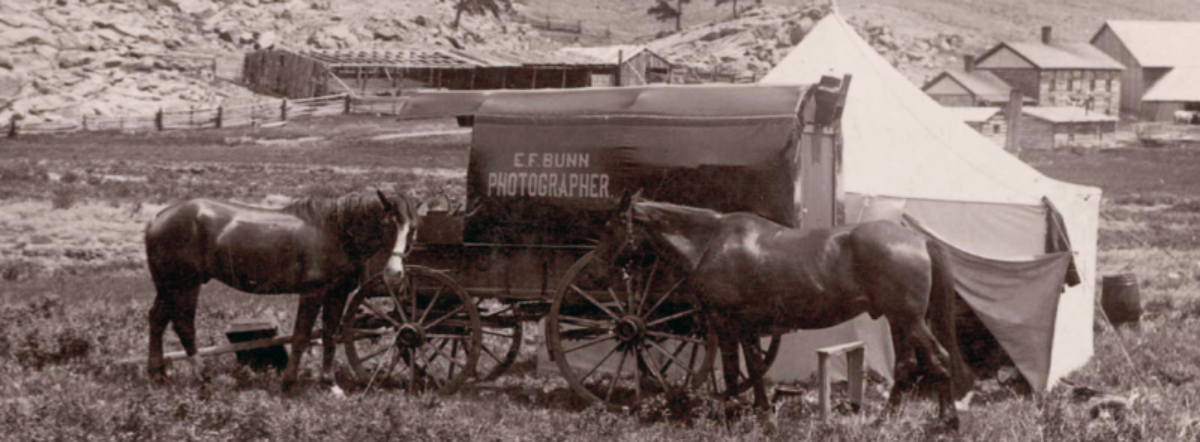Frank E. Baker was born in Wisconsin in September 1849 to Garrett H. Baker and Elmina Clapp. His mother retained her maiden name. Active as social reformers, the family joined the Wisconsin Phalanx commune in Fond du Lac County in the late 1840s. Based on the ideas of French philosopher Charles Fourier, the members lived together in longhouses and ate communal meals. They raised potatoes, buckwheat, turnips, and winter wheat. The community grew to nearly 200 people before dissolving in the early 1850s.
In 1858, the Garrett Baker family settled in Cobden, Illinois, and established a profitable fruit farm. They supported the Underground Railroad, aiding southern slaves to relocate to free states in the North, despite opposition from many Southern sympathizers in their community. Frank’s sister Kate taught wood carving at Hampton Institute, established in 1868 to provide skills to Black people after the Civil War.
Frank E. Baker claimed to have worked on Ferdinand Vandeveer Hayden’s 1871 expedition, but I have not been able to confirm this. He married Harriet Davis on September 1, 1872, at her sister’s home, the Kilbourn ranch, near Loveland, Colorado. They spent their first winter in Greeley, Colorado before making a home outside Champaign, Illinois. The Bakers pursued horticulture, growing apples, grapes, plums, and other fruits. In 1877, Mrs. Baker exhibited canned and preserved fruits at the county fair. Frank Baker exhibited apples and wine grapes at the Illinois State Fair a few years later. In 1883, as a commission agent, he shipped nearly 1,000 bushels of apples to Chicago and Eastern markets.

The Bakers often summered in Estes Park, Colorado with Mrs. Baker’s family and Baker often opened a temporary photo studio in the mountains. He regularly hiked, even summiting the highest peak in the area— Long’s Peak, with an elevation of 14,259 feet. When he returned home, Frank Baker presented magic lantern slide shows of Rocky Mountain scenery at local schools, perhaps from his photographs.

By 1891, the Bakers made Greeley, Colorado their permanent home. In addition to his Greeley studio, he opened a branch gallery in Loveland. The following year, Baker, working under Greeley photographer Morton E. Chase, ran a gallery in Fort Morgan, Colorado, visiting several times a year to make portraits.
In March 1893, Baker bought out M. E. Chase. He secured a contract to photograph students graduating from the State Normal School in Greeley, (now the University of Northern Colorado), after administrators compared Baker’s work to several Denver studios and believed he could deliver better work at a cheaper price.
In April 1897, Baker traveled to Chicago to acquire supplies for his gallery. He purchased new backgrounds for the studio and brought back a full line of amateur cameras.
In 1902, Baker sold his business to the Stewart Brothers and began a career in real estate. Frank E. Baker passed away on November 10, 1939 and was laid to rest in Loveland, Colorado’s Lakeside Cemetery. Surprisingly, no obituary was published in the local newspapers.
Thank you to collector W. G. Eloe and Jessica Michak, Curator of Collections, Estes Park Museum for providing digital images. Miranda Todd at the Greeley Museum provided research assistance. Beverly Brannan kindly proofread this blog post.
